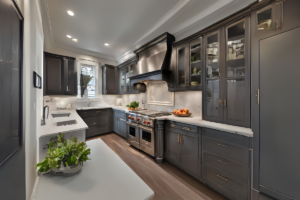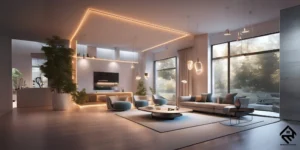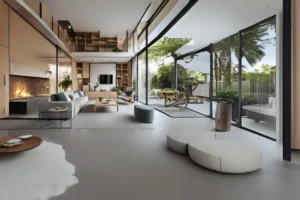How Custom Kitchen Cabinet Design Can Transform Your Renovation
Embarking on a kitchen renovation can be an exciting yet daunting task. At the heart of this transformation are the kitchen cabinets, which play a pivotal role in both the functionality and aesthetic appeal of your space. Engaging a skilled handyman can be invaluable in bringing your renovation ideas to life, ensuring precision and quality craftsmanship. Thoughtfully designed kitchen cabinets not only enhance your home design but also provide efficient storage solutions tailored to your needs. When planning your renovation, consider the cost of materials, finishes, and installation, as these factors significantly impact your budget. Whether you prefer a contemporary look or a more traditional style, custom cabinets offer endless possibilities to suit your taste and lifestyle. Investing in high-quality cabinets not only elevates the overall look of your kitchen but also adds value to your home, making it a worthwhile renovation project.
1. Understanding Your Needs
Functionality:
Cabinet design functionality ensures efficient use of kitchen space, featuring elements like pull-out shelves, lazy Susans, and customized organizers to maximize storage and accessibility. These features streamline your workflow, making it easier to access and store kitchen essentials, ultimately creating a more organized and efficient cooking environment.
Style Preference:
Style preference reflects your personal taste and complements your home’s overall aesthetic. Choose from traditional to modern designs, with a variety of materials and finishes. Whether you prefer the timeless appeal of wood or the sleek look of stainless steel, your cabinet style can enhance the visual appeal and cohesion of your kitchen.
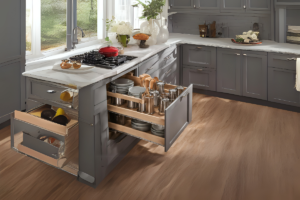
2. Layout and Space Planning for Kitchen Cabinets
Optimizing Space:
Efficient use of space in kitchen cabinet design is crucial for maximizing functionality and storage. Incorporate clever storage solutions like pull-out shelves, lazy Susans, and vertical storage to make the most of every inch. These features enhance accessibility and organization, ensuring that your kitchen remains tidy and efficient.
Work Triangle:
A well-designed work triangle is essential for a smooth kitchen workflow. Ensure your cabinet design considers the relationship between the sink, stove, and refrigerator. Properly positioning these elements minimizes unnecessary movement and streamlines cooking processes, making your kitchen more efficient and enjoyable to use.
3. Material Selection for Kitchen Cabinets
Wood Types:
The choice of wood significantly impacts the aesthetics and durability of your kitchen cabinets. Popular options like oak, maple, cherry, and walnut each offer distinct textures and colors, allowing you to achieve a variety of styles from rustic to modern. Oak is known for its strength and grain patterns, maple for its smooth finish, cherry for its rich color, and walnut for its deep, luxurious tone.
Alternative Materials:
For a unique and contemporary touch, consider materials like stainless steel, laminate, or glass. Stainless steel offers a sleek, modern look and is easy to clean, making it ideal for contemporary kitchens. Laminate provides a budget-friendly option with a wide range of colors and patterns, while glass cabinet doors can add elegance and create an open, airy feel in your kitchen.
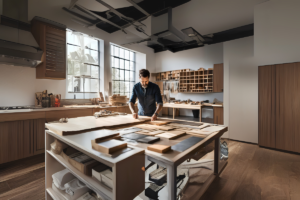
4. Customization Options for Kitchen Cabinets
Door Styles:
The door style of kitchen cabinets sets the overall tone of the space. Popular choices include shaker and slab doors, each offering a unique aesthetic. Shaker doors are characterized by their classic, clean lines, while slab doors provide a modern, minimalist look. These styles can be further customized with a variety of finishes and hardware, allowing for a personalized touch that enhances the overall kitchen design.
Finish Choices:
The finish you choose for your cabinets can significantly impact the kitchen’s look and feel. Options include paint or stain, and finishes can be glossy or matte. A high-gloss finish adds a sleek, contemporary feel, while a matte finish offers a more understated, elegant appearance. Selecting the right finish ties the cabinetry to the overall kitchen theme, creating a cohesive and stylish space.
Hardware Selection:
Hardware, such as knobs, handles, and hinges, serves as the jewelry of kitchen cabinets. The right hardware choice complements the cabinet design and adds a finishing touch that elevates the kitchen’s aesthetic. From sleek, modern handles to traditional, ornate knobs, hardware selection allows you to infuse your personality into the kitchen design.
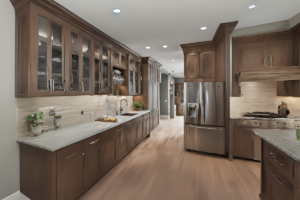
5. Innovative Features for Kitchen Cabinets
Smart Storage Solutions:
Incorporating smart storage solutions in kitchen cabinet design ensures a tidy and efficient kitchen. Features like pull-out spice racks, hidden trash bins, and drawer organizers maximize space and keep your kitchen organized. These solutions provide easy access to essentials, reduce clutter, and improve overall functionality, making your kitchen more user-friendly and visually appealing.
Lighting:
Effective lighting enhances both functionality and ambiance in the kitchen. Under-cabinet lighting, such as LED strips or puck lights, provides task lighting for food preparation and adds a modern touch to the design. Proper lighting improves visibility, creates a welcoming atmosphere, and highlights the beauty of your cabinetry, making your kitchen a more enjoyable space to cook and gather.
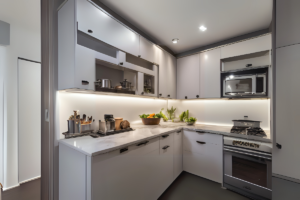
6. Budget Considerations for Kitchen Cabinet Design
Cost Factors:
Custom kitchen cabinets can represent a significant investment in your home. Various factors influence the overall cost, including the choice of materials, the type of finishes, and the complexity of the design. High-end materials such as solid wood or custom hardware typically increase costs, while simpler designs and standard finishes can be more budget-friendly. It’s essential to carefully plan your budget and understand where to allocate funds to achieve the desired balance between quality and cost.
Balancing Quality and Cost:
Achieving a high-end look without overspending is possible by strategically mixing premium elements with more budget-friendly options. For example, you might choose high-quality, durable materials for cabinet doors and opt for cost-effective finishes on the interior shelving. Another approach is to use premium hardware on visible cabinets and standard hardware in less prominent areas. This way, you can create a beautiful, functional kitchen that meets your design and budget needs without compromising on quality.

7.Sustainability in Kitchen Cabinet Design
Eco-Friendly Materials:
Choosing sustainable materials and finishes for kitchen cabinets is essential for eco-conscious homeowners. Bamboo and reclaimed wood are excellent choices that not only reduce environmental impact but also add unique character to your kitchen. These materials are renewable, durable, and can be finished with non-toxic, low-VOC paints and stains to ensure a healthier indoor environment.
Green Practices:
When selecting cabinetry, consider the environmental impact by opting for manufacturers who follow eco-friendly practices. Look for companies that use sustainably sourced materials, employ energy-efficient manufacturing processes, and minimize waste. By supporting these green practices, you contribute to a more sustainable future while enjoying beautifully crafted, environmentally friendly kitchen cabinets.
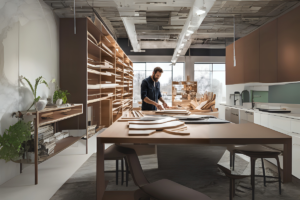
8. Working with a Professional
Finding a Designer:
Collaborating with a professional designer can help bring your vision to life. Look for someone with experience in kitchen design and a portfolio that resonates with your style.
Custom vs. Semi-Custom:
Understand the difference between fully custom and semi-custom cabinets. Semi-custom options offer some customization at a lower price point.
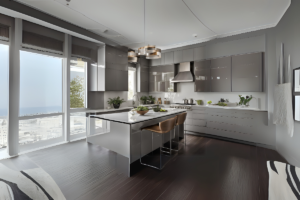
9. Personal Touches in Kitchen Cabinet Design
Unique Details:
Infuse your kitchen with personality by incorporating unique details such as custom carvings, distinctive hardware, and specialized storage solutions. Custom elements like these not only make your kitchen cabinets stand out but also reflect your personal style, creating a space that feels truly your own. From intricate door carvings to one-of-a-kind handles, these personalized touches add character and elegance to your kitchen.
Color Schemes:
Experimenting with color schemes can transform the look and feel of your kitchen. While white and neutral shades are timeless and versatile, bold colors can make a striking statement and inject personality into your space. Consider using vibrant hues for cabinet doors or accent walls to create a dynamic and inviting kitchen environment. Combining different colors can also add depth and interest, making your kitchen both functional and visually appealing.
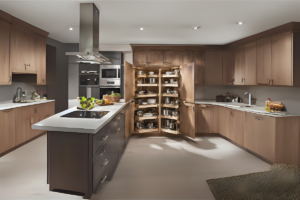
10. Trends and Inspirations in Kitchen Cabinet Design
Current Trends:
Staying updated on current kitchen cabinet design trends can keep your space looking fresh and modern. Popular trends include minimalist designs that emphasize clean lines and simplicity, open shelving that offers easy access and a sense of openness, and two-tone cabinets that add depth and visual interest by combining different colors or finishes. These trends not only enhance the aesthetic appeal of your kitchen but also improve functionality and organization.
inspiration source:
Gathering inspiration from various sources can help you visualize and plan your kitchen cabinet design. Design magazines and online platforms like Pinterest provide a wealth of ideas and examples. Visiting showrooms allows you to see designs in person, helping you understand how different styles, materials, and layouts will look in your space. By exploring these sources, you can find the perfect inspiration to create a kitchen that reflects your personal taste and meets your practical needs.
